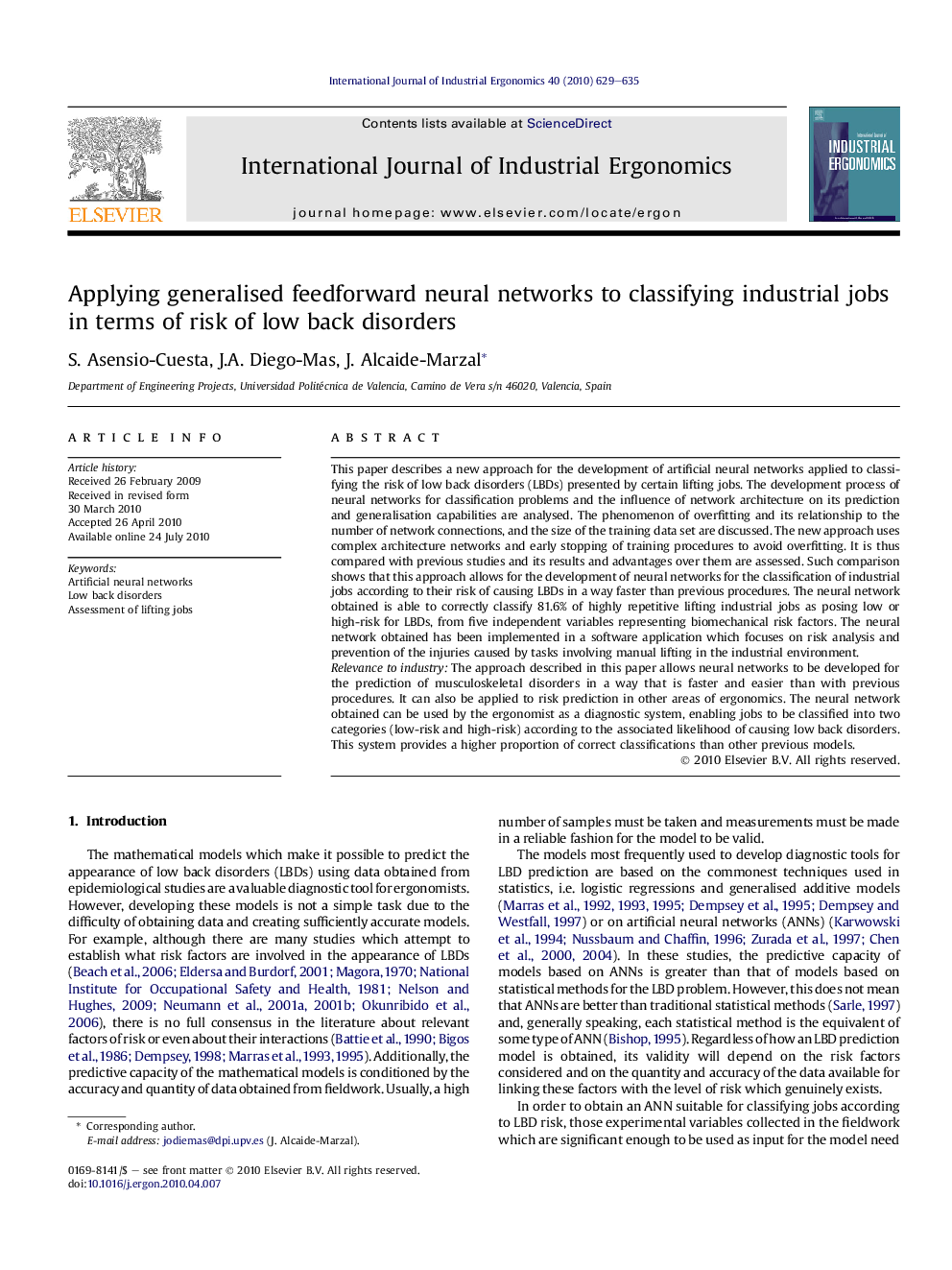| Article ID | Journal | Published Year | Pages | File Type |
|---|---|---|---|---|
| 1096380 | International Journal of Industrial Ergonomics | 2010 | 7 Pages |
This paper describes a new approach for the development of artificial neural networks applied to classifying the risk of low back disorders (LBDs) presented by certain lifting jobs. The development process of neural networks for classification problems and the influence of network architecture on its prediction and generalisation capabilities are analysed. The phenomenon of overfitting and its relationship to the number of network connections, and the size of the training data set are discussed. The new approach uses complex architecture networks and early stopping of training procedures to avoid overfitting. It is thus compared with previous studies and its results and advantages over them are assessed. Such comparison shows that this approach allows for the development of neural networks for the classification of industrial jobs according to their risk of causing LBDs in a way faster than previous procedures. The neural network obtained is able to correctly classify 81.6% of highly repetitive lifting industrial jobs as posing low or high-risk for LBDs, from five independent variables representing biomechanical risk factors. The neural network obtained has been implemented in a software application which focuses on risk analysis and prevention of the injuries caused by tasks involving manual lifting in the industrial environment.Relevance to industryThe approach described in this paper allows neural networks to be developed for the prediction of musculoskeletal disorders in a way that is faster and easier than with previous procedures. It can also be applied to risk prediction in other areas of ergonomics. The neural network obtained can be used by the ergonomist as a diagnostic system, enabling jobs to be classified into two categories (low-risk and high-risk) according to the associated likelihood of causing low back disorders. This system provides a higher proportion of correct classifications than other previous models.
